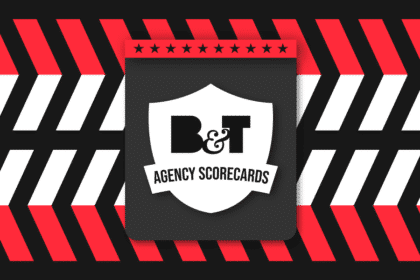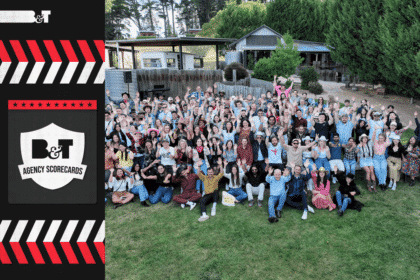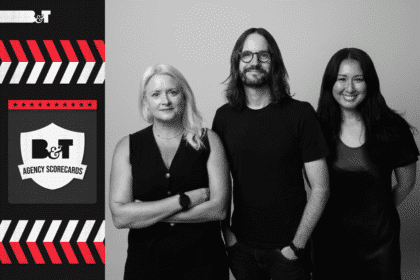From scepticism to dreaming – those were MediaCom’s initial thoughts when it were first told what Programmatic OOH (POOH) was going to look like in the future – and sometimes it still feels a long way away.
However, over the last 18 months MediaCom have been on a ground-breaking journey, pioneering not only the Australian approach to POOH, but also becoming recognised as global leaders in this emerging channel.
After an extensive RFI process, 12 months ago MediaCom partnered with the global market leading DSP, Hivestack. The platform now enables MediaCom to combine mobile device data with the ability to transact DOOH screens programmatically, significantly changing the way that DOOH is being bought, optimised and measured.
Since launching the product, MediaCom have now activated over 30 POOH campaigns across almost all categories, we have had multiple global firsts, lots of lessons and most importantly, delivered marketing leading results for our clients.
Here’s how it works:
During the Sydney AdTech OOH conference in September, MediaCom, along with industry partners, unveiled the results of our campaigns using multiple variations of programmatic digital out-of-home. Here are some case studies we hope will inspire clients across Australia to invest in the benefits of this approach.
Case study 1:
Client: Hayu
Campaign: Australia’s first 3rd party DSP served POOH campaign
Introduced in 2016, hayu is a world class subscription-based video streaming service owned by NBCUniversal Universal that focuses on female-driven reality TV content (think Kardashians and The Real Housewives).
Challenge: To focus their OOH buying on capturing more of their target demographic for a particular brief, which were women in the 18 – 24 age group.
Solution: Using GroupM’s DMP ‘mPlatform’, we had identified over 2.6 million devices that belonged to the target audience. Utilising Hivestack’s platform, we were able to identify the optimal screens based on audience movement patterns when we saw a high index of this audience present. Only when there was a higher than average density of these devices did we bid and serve our Hayu Creative.
Results: Focusing our OOH buying in this way dramatically increased how many of our in-target audience saw this campaign, delivering 2.9x more on target impressions than we estimate would’ve been delivered when booking OOH activity in the traditional way.
Case study 2:
Client: News Corp Australia
Campaign: A world first using app data
News Corp Australia ran a brilliant campaign called the ‘Night Watch’, which focused on praising the people behind the stories “essential workers” (police, firefighters, doctors/nurses/ambos) for their service during the first wave of COVID-19 (May – June).
Challenge: News Corp Australia believed that the audiences who regularly engaged with news content would be the most receptive to this emotive ‘behind the stories’ content campaign based on their own research.
The goal was to increase engagement of news articles and acquire new subscribers with the content.
Solution: Hivestack, along with their mobile data providers, Lifesight, created an audience segment that regularly engaged with news apps. We created an audience in our target market of 1.1M devices.
Results: Whilst again, OOH is always a one to many medium, it dramatically increased how many of our in-target audience saw this campaign, delivering 4.6x more on target impressions than booking direct. This is one of the first instances of mobile app data being used to power programmatically bought OOH inventory.
Case study 3:
Client: KFC
Campaign: Real ROI using POOH
KFC ran an offer driven creative campaign “24 nuggets for $10” in one market.
Challenge: KFC wanted a way to identify and target high propensity customers to complement their existing OOH activity and prove effectiveness.
Solution: Using Hivestack and anonymized mobile device data, we created an audience of “People that had a high propensity to eat at QSR restaurants”. Using mobile data, we created geofences that identified devices that had frequented a Maccas, Hungry Jacks or Subway in the last month. Hivestack’s platform then activated screens at a time when a high propensity of the target audience was in the vicinity of those screens.
Results: Alongside improvements in targeting, buying this campaign programmatically allowed us to create a feedback loop of footfall visitation data, providing us with the opportunity to optimise the campaign throughout its duration, as opposed to the static process of buying directly.
Hivestack’s platform created segments of devices that were exposed to our messaging, and then monitored the subsequent visitation rates of this audience to a KFC store. By comparing this rate to a control group, we can measure the lift percentage caused by the campaign. This result can be tied back to specific ad plays, allowing us to optimise towards screens and times of day that provide the greatest lift for our client.
In summary, this technology is giving MediaCom clients real benefits and improved results that are measurable, it is a ground-breaking platform that is delivering superior results.
“The market has done an amazing job at getting this far and the technology roadmap is only going to improve in the coming year, making it more accurate and driving increased results,” said Matt Bushby Hivestack’s Managing Director, ANZ, SEA. “In 2021, we are expecting more clients to embrace the benefits of programmatic DOOH. There is so much excitement around the power of buying programmatic OOH, particularly due to the capabilities of analysing the changing moving patterns of a targeted audience and being able to provide meaningful and measurable results.”
As a foundation partner, Hivestack have recently completed their integration with JCDecaux SSP, VIOOH in Australia, enabling access to premium digital Street Furniture inventory in the region.
Max Eburne, JCDecaux Chief Commercial Officer added, “MediaCom should be applauded for their pioneering work in this exciting area. We see great potential in the growth of Programmatic Out-of-Home which will be a focus for us in 2021.”








